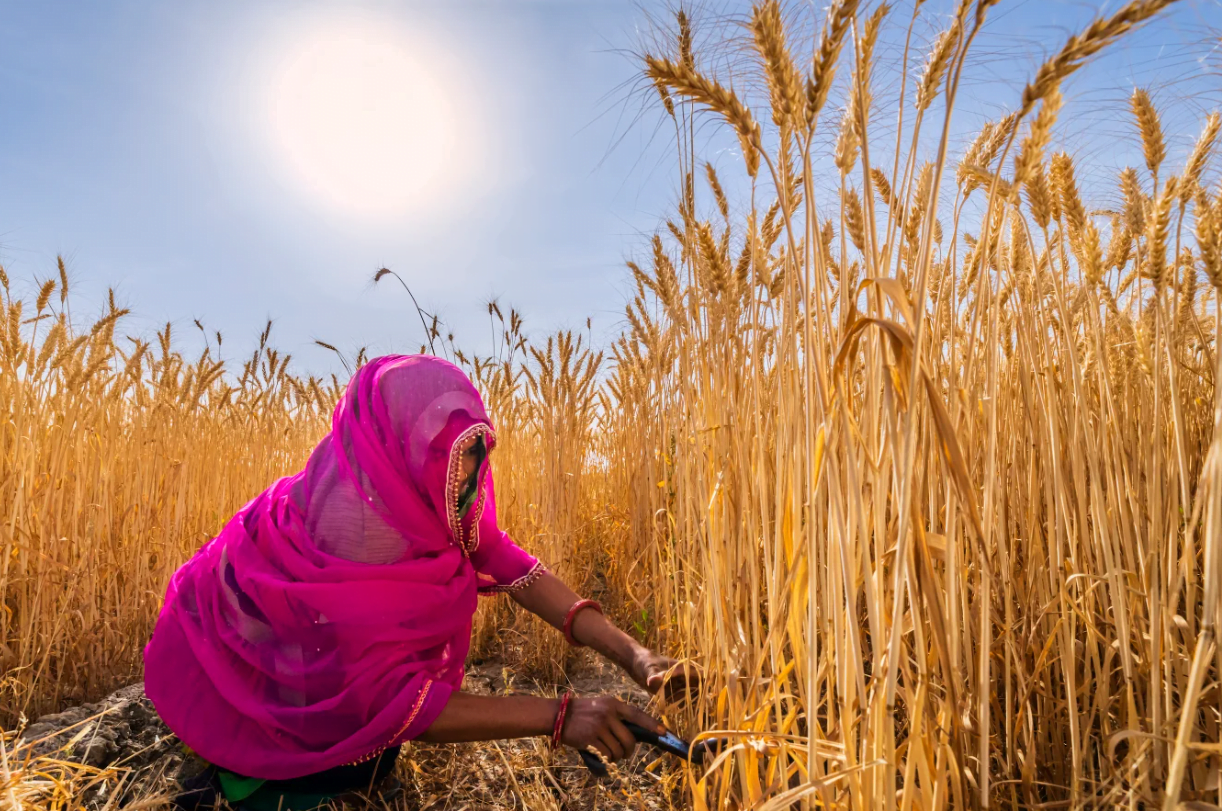This happened at the start of the month. I was getting an alert from my son’s teachers about the school’s girls’ day celebrations on the 9th of March. I had been meaning to read it but never got round to opening the message. One day when I finally got the alert again, I hastened to open it for there was just one day to go and if it needed any preparations on our part, now was the time. I opened it and what I read triggered me immediately.
The school wanted the girl students to be made to wear pink coloured outfits and the boys blue coloured outfits for the celebrations.
Relegating children to an either/or framework by colour-coding them will only reinforce gender-based stereotypes and make them internalise this binary of only man and woman as being the natural two genders.
Also read: The Colour Pink: The Colour Of Our Battlefields

I felt compelled to do something about it and so this is the letter I wrote to the school:
Dear Office bearers of ….
This is with reference to the girl’s day celebrations where girls have been asked to dress in pink and boys in blue. For someone who has been engaged in the field of Gender Studies for over a decade now and a concerned parent I would just like to share the ramifications of these practices especially when they are legitimised and endorsed by formal institutions like a school which plays such a pivotal role in the socialisation process of the child and also in developing an understanding of the self and identity within the social space in a reflexive and inter-relational manner.
It is now a well-established theory which has taken years of painstaking efforts on the part of intellectuals, critics, academics, thinkers, writers, theorists, activists and all those who believe in social justice to establish that gender is not a binary but a spectrum and gender is not natural but a cultural phenomenon. Relegating children to an either/or framework by colour-coding them will only reinforce gender-based stereotypes and make them internalise this binary of only man and woman or boy and girl as being the natural two genders or the two natural categories. This means the children will grow up in this belief system, and at a later stage in life find it very difficult to accommodate or include the idea of many genders or people being gender fluid or gender non-conformist. And what about those children who may not subscribe to the gender assigned to them or the gender they are expected to perform? Where will they then go? They will naturally be marginalised and ostracised. This could the beginning of an indoctrination of life long prejudices like transphobia, homophobia, and the like.
Practices such as these have the possibility to discourage students from trying out or developing other aspects of their personality as the process of identifying with a colour implying gender conformity is the same as identifying with a particular toy, a sport, a film, a subject, a career or a chore – in short an identity that is made up of choices that are gender conformist in nature and further entrench these stereotypes deepening the divide between masculine and feminine and trying to suggest that boys have to be masculine and girls have to be feminine. Naturally, then we can’t complain that boys do not do housework or that girls have to work the double shift once they are married and have a family because we are the ones introducing them to the gender divide and telling them that this is what masculine or being a boy means and this is what feminine or being a girl means.
I was so happy a few years ago when my son had to wear a pink shirt at the Annual Day and it made me very hopeful that this institution is really a progressive space which is in the process of dismantling stereotypes. I am sharing a picture for your reference.
Progressive schools such as yours need to critically interrogate these practices and ask if such practices actually lead to inclusiveness and egalitarianism related to caste, class, race, gender, religion and ethnicity instead of acting as vehicles of the same stereotypes that espouse a culture of exclusion and divisiveness and privilege gender conformity over gender fluidity. In fact the school could engage in celebrating days which will create an interface between its very privileged students and marginalised communities in society. For example, it could observe a LGBTQ+ day celebrations to create more awareness about gender. And even if it wishes to celebrate girl’s day, there are so many progressive ways to observe it rather than engaging in practices and ceremonies that can prove to be detrimental and will actually not be instrumental in sensitising students to the whole idea of gender as performative and as a spectrum.
I will be most happy to substantiate this point with material and empirical evidence if the school so desires.
I hope the school shall take cognisance of this very grave issue and understand the long term ramifications of practices such as these.
Sharing for your reference just one more image and a link to an article which says how colour-coding is a sexist practice and needs to go.
Regards
Shyaonti Talwar
That very evening I got a call from the primary section coordinator apologising profusely and passing the buck on to the subject teacher for having posted something like this without consulting the management and that of course they had no intention of celebrating the girls’ day in this manner. I didn’t tell her how far-fetched and unconvincing it sounded especially considering that it had not been posted just once by a particular subject teacher but several times by several teachers. At that point I was just happy that they had withdrawn the celebrations.

Very simply put, gender is a performative act. American philosopher and gender theorist Judith Butler calls gender “performative” and not a performance because she sees people choosing to walk, talk, act, sleep, dress up in a way that will give the world an impression of they being either a man or a woman, not once or twice or a few times, but every single moment, every single day. She refers to this as the social construction of gender which is reinforced through the ways in which we are initially made to and later expected to and much later involuntarily and unconsciously produce and perform actions that are gender conformist in nature.
Also read: Gendering Kids Clothing: More Than Just A Colour War
She posits that gender is in no way “a stable identity” but rather an “identity instituted through a stylized repetition of acts.” In her book Pleasure Activism: The Politics of Feeling Good, black feminist and pleasure theorist adrienne maree brown gives us an instance of this when she observes how, we as part of the ideological institution of the family or the school in telling little girls, to sit “properly” are actually sexualising her body and deciding on her behalf how she ought to perform her gender and think of herself long before she has reached a stage when she is consciously aware of her sexual self.
Though I was happy with the school’s response and my small win, the incident set me thinking about certain things: A. If I were not an academician and an educator with considerable social capital, would they have heeded my grievance then? B. Sure, they withdrew the celebrations but they didn’t issue a formal explanation with respect to the withdrawal. It was just replaced by another announcement so the issue, did in fact, go unacknowledged. C. What can we do as mothers to develop or inculcate a more inclusive sensibility in our children?
Small things can go a long way. For instance, telling our children that it is okay to wear any colour or play with whatever toy they want to or choose any sport or wear whatever clothes they’d like to, instead of shaming them and regimenting them.
Can we start with simple things: perhaps by addressing or helping our children question those very things that they might be assimilating from the various different spaces they inhabit. Small things can go a long way. For instance, telling our children that it is okay to wear any colour or play with whatever toy they want to or choose any sport or wear whatever clothes they’d like to, instead of shaming them and regimenting them. And maybe, just giving them agency and then stepping back to see how they exercise it instead of choosing on their behalf. And observe if something like gender that we deem as so natural is not a matter of everyday choice and everyday performance?
We can also do small seemingly insignificant things that may have a far-reaching impact, like reaching out to people or seeking out a larger community whether virtual or otherwise to spread the small acts of transformation and activism that we are engaging in or practicing that otherwise may end up being invisibilised. This is why I chose to put this incident in the public domain because we honestly need many, many more…in days to come.
Featured image source: Getty Images





“A small step is lead to a big success.'”
Very nice step madam, because of your letter, school at least revise their program.
And institution like school has a great impact on every child’s mind.So good beginning.